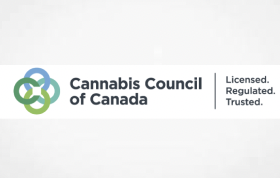Cannabis plants contain active chemical compounds that may relieve certain conditions. One such compound, cannabidiol (CBD), holds particular promise for chronic pain treatment. CBD has gained widespread popularity thanks to new delivery methods like gummies that mask cannabis’s earthy flavor.
These candy-like edibles also elicit curiosity around whether sweet CBD snacks can effectively and safely relieve pain when other options fall short. As CBD accessibility grows, people wonder – are gummies more than just a sugary fad or legitimate medicine? Exploring the science suggests they may offer viable natural pain relief for some.
Strongest CBD Gummies
With the surge of CBD gummies for managing pain and other issues, understanding labeling proves critical. When exploring the strongest CBD gummies on the market, terms like “strongest” typically refer to the concentration or potency of CBD per gummy, not the whole package.
The strongest CBD gummies feature higher per-piece dosages which may require consuming fewer gummies to reach therapeutic levels. However, optimal dosage depends on personal factors like metabolism and severity of symptoms. While highly concentrated edibles provide options for customization, stronger does not necessarily mean better quality.
Checking third-party certifications for precise CBD levels, sticking to recommended servings, and adjusting as needed makes finding your sweet spot for relief easier. Moderation helps ensure safety and avoids exceeding legal limits too.
Pain and the Body
Whether acute or chronic, pain starts with a complex interplay of signals within the nervous system. When bodily damage or injury occurs, nerve cells release certain chemicals that communicate to the brain that something is causing discomfort.
Chronic pain is even more complicated, often persisting for months or years beyond any apparent injury as these neural alarm signals continue firing.
How CBD Impacts Pain
CBD’s impact on pain management revolves around its interaction with the body’s Endocannabinoid System (ECS). This system plays a less-talked but crucial role in managing several physiological and cognitive processes of people’s bodies, such as mood, immune response, and pain sensation.
When consumed, CBD interacts with ECS receptors. It’s believed to desensitize your pain-detecting nerves and engage your endocannabinoids to help regulate inflammation – two actions that can simultaneously alleviate discomfort.
Methods for Using CBD
The pathways for taking CBD are varied – from tinctures, lotions to even inhaling as vapor. However, each method has its unique rate and extent at which CBD enters your bloodstream.
Eating CBD gummies offers the benefits of oral ingestion – ease of use, long-lasting effects due to slow absorption rate, and adequate mask of the earthy flavor of CBD. Drawing towards their popularity could also be factors like avoiding direct exposure to heat (as in cooking), or avoiding inhalation-related concerns as in vaping.
Understanding CBD Dosage
Pinning down an exact dosage for CBD might seem tricky due to individual variations in body chemistry and reasons for usage. To top it off there isn’t a universal recommended daily dose provided by the FDA.
Generally, the thumb rule followed is to begin with a small dosage, assess the body’s reaction, and then gradually increase until you find an amount that suits your needs. The perfect dosage would subtly provide relief and simultaneously elude side effects.
Efficacy of Oral Consumption
CBD orally consumed – like with CBD gummies – has to go through the digestive system before it gets absorbed into the bloodstream. This might take longer than other methods, but its effects tend to be longer-lasting.
It’s important to remember though that during digestion, part of the CBD is broken down by the liver (what’s known as first-pass metabolism) which reduces overall concentration before it reaches systemic circulation.
Some research suggests that coupling CBD with lipids can improve absorption mitigating this issue. Recognizing such studies, many reputable brands infuse their gummies with coconut oil or other healthy fats for optimized action.
CBD Extraction Methods
Considering how a company extracts their CBD is imperative when assessing gummy products, as this impacts safety and quality. Currently, the supercritical CO2 method reigns supreme due to its high efficiency at preserving CBD’s purity and the fact that it eliminates potentially dangerous chemical solvents from the equation.
Other common approaches use ethanol or hydrocarbons for stripping away CBD, but these can leave traces of potentially harmful residues if not properly handled.
Quality Checking CBD Products
In an industry not yet subjected to extensive regulation, performing due diligence on any CBD product by examining third party lab test results is a smart move. This provides confirmation that what’s on the label matches actual contents.
It also gives peace of mind that the product has been screened for contaminants like heavy metals, pesticides and too-high THC content. Further, understanding a company’s hemp source and checking farming standards offers useful insight into overall quality.
Contrasting THC and CBD
Despite both originating from cannabis plants, CBD and THC have remarkably different effects. While THC’s claim to fame lies in its ability to generate an intoxicating high, CBD does not bind directly to the receptors that create this effect.
Thus, ingesting CBD should not impair mental processes or cause you to feel stoned. In fact, CBD may help counterbalance some unwanted effects of THC if they are consumed together.
Legal Stance on CBD
While the 2018 U.S. Farm Bill federally legalized CBD derived from industrial hemp containing less than 0.3% THC, various state laws still govern CBD possession and use. Some CBD products are completely legal, but different parts of the world like the EU have their own laws. It’s important to verify the guidelines for the region you live or are traveling to regarding CBD.
For example, the FDA has not formally approved non-prescription CBD products for medical use, despite their growing availability in health stores and pharmacies. However, CBD is gaining more widespread consumer access and use for wellness purposes every year. Consumers should research laws in their state and relevant countries before traveling with any CBD products or assume full legality across borders.
As the regulatory environment continues evolving rapidly, it’s wise to confirm regional restrictions on CBD type, source and application.
Potential Side Effects
Though most people tolerate CBD well, potential side effects may occur – predominantly when taken at very high doses or armed with certain health conditions or medications. Reported side effects include dry mouth, drowsiness or fatigue, reduced appetite, and occasional diarrhea.
It’s fundamental to listen to your body while exploring CBD dosages for pain relief or any other purpose. If any uncomfortable side effect emerges, it might signal a need to downgrade dosage or discontinue use and consult a healthcare professional.
Gummies Versus Other Forms
CBD gummies offer certain advantages over other methods of consuming cannabis, which is being used innovatively these days even in things like specialty sushi. For starters, gummies provide more accessibility and convenience – they are easy to dose, transport, and consume discreetly without drawing much attention. Moreover, the candy-like flavors and textures mask any earthy hemp tastes some find unpalatable.
However, a downside is that particular gummy products may contain added sugars or artificial ingredients to enhance flavor and color. For wellness enthusiasts focused on clean, plant-based consumption, these additives can be a turnoff.
Still, the discretion, ease of dosing, and tastiness makes CBD gummies an appealing starting point for those new to incorporating cannabis-based wellness options like oils, capsules or vapes into their health regimen. Determining any undesirable ingredients present and adjusting choices accordingly remains key.
To Summarize
CBD gummies offer a practical and enjoyable way to reap potential CBD benefits including pain relief. While research keeps enlightening you of its therapeutic value, remaining a discerning consumer in terms of product quality and maintaining open communication with healthcare professionals ensures obtaining maximal benefit while minimizing risk.


















